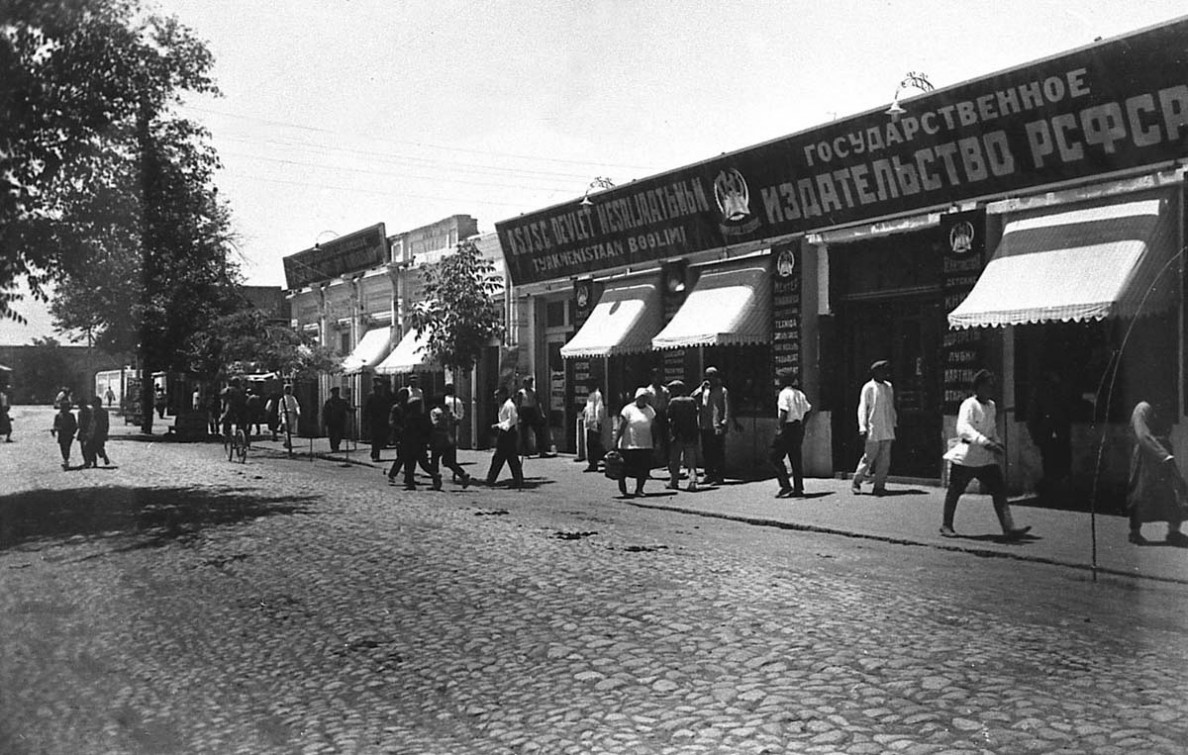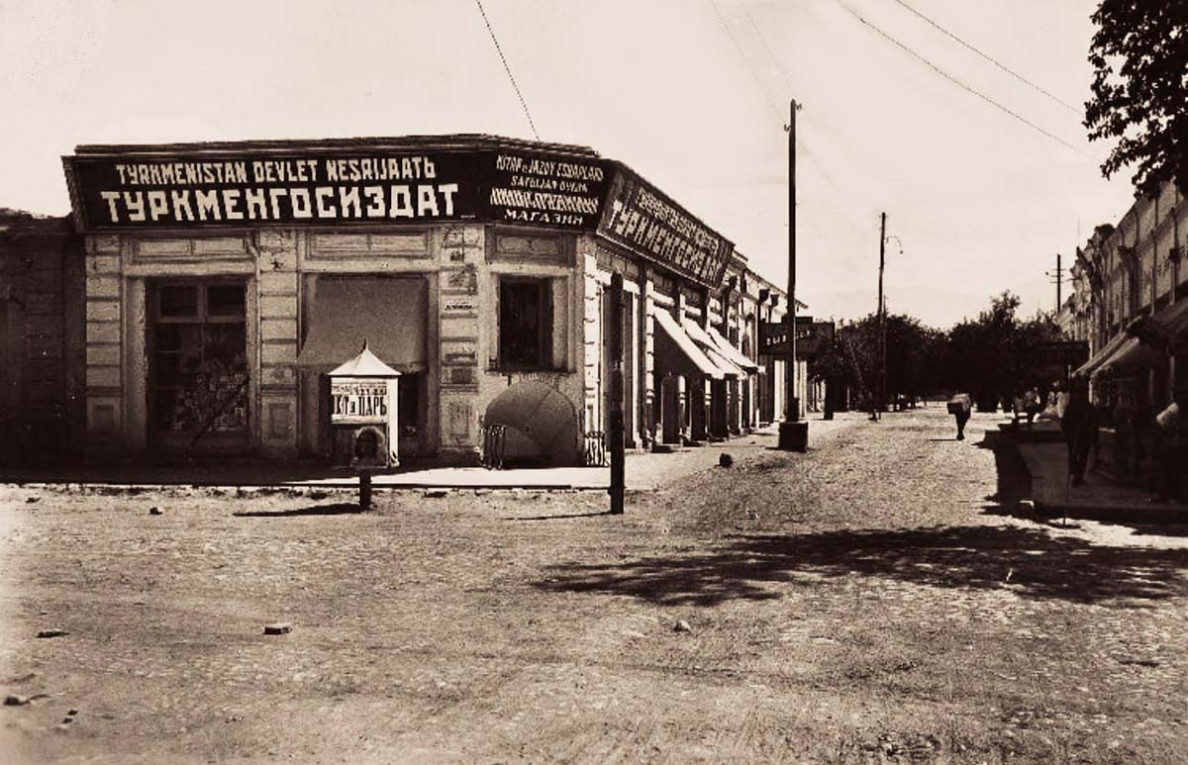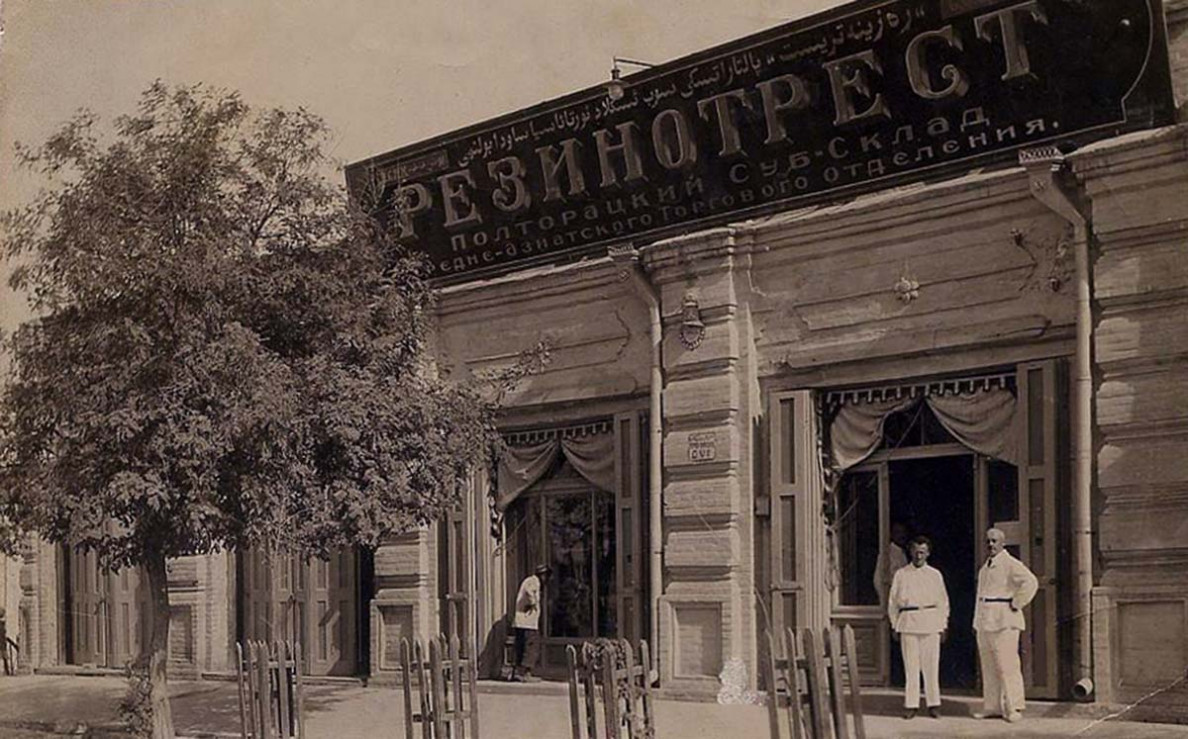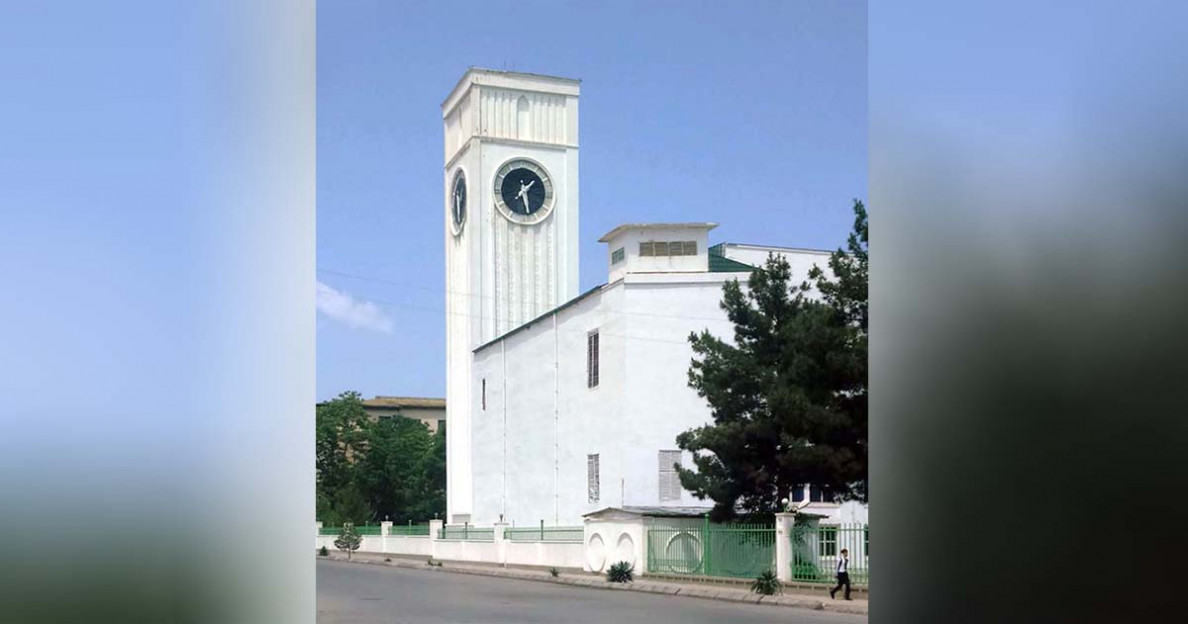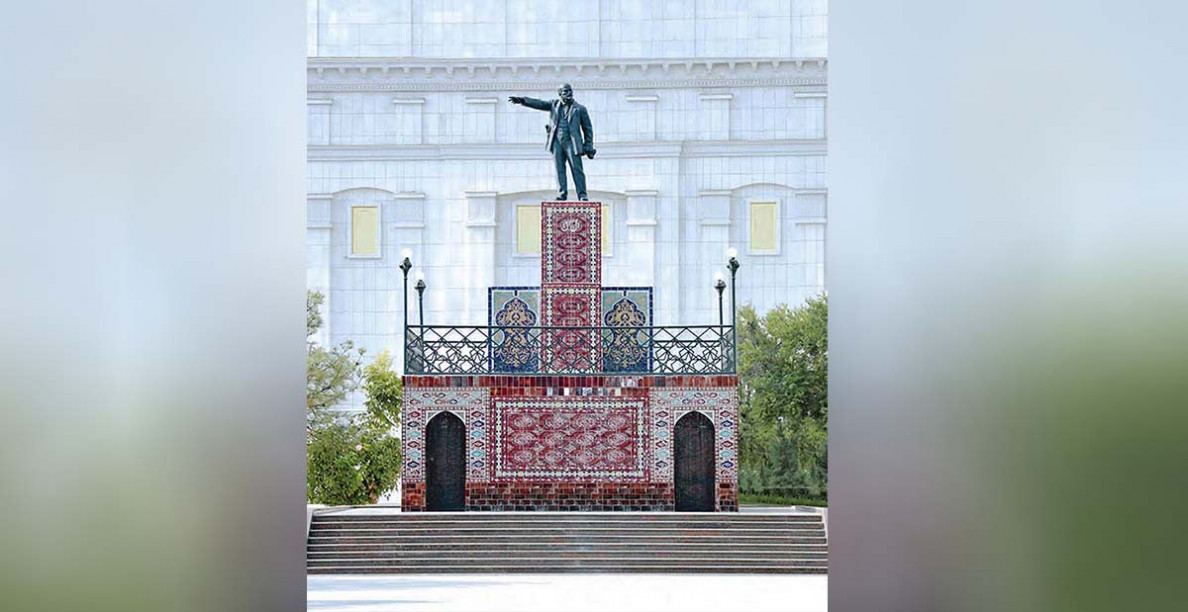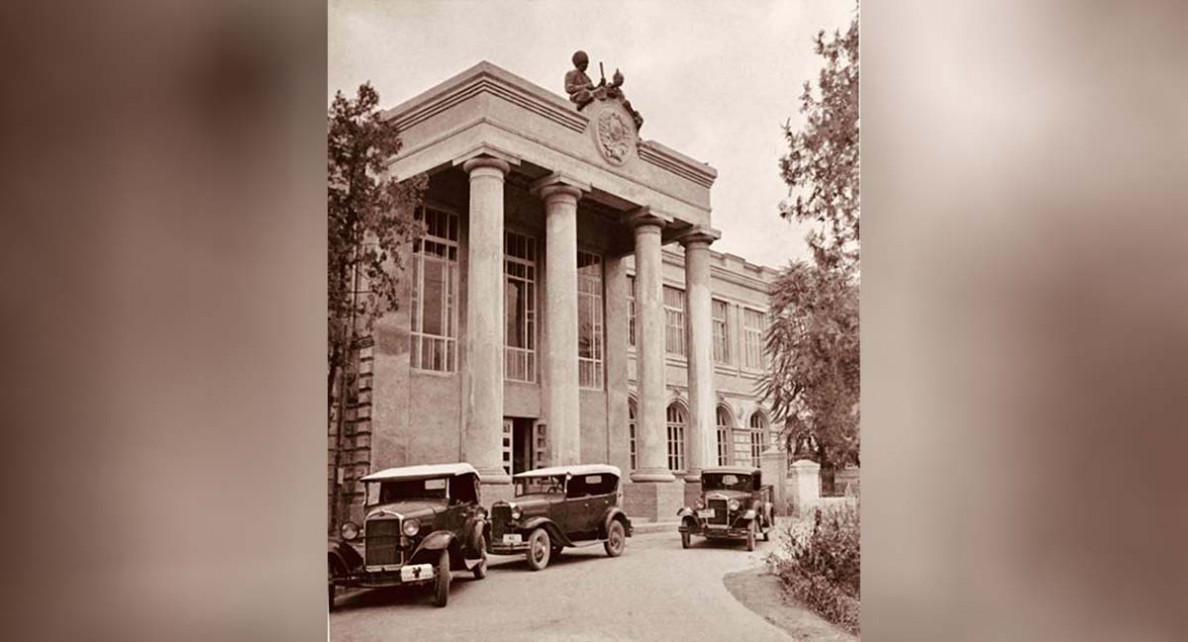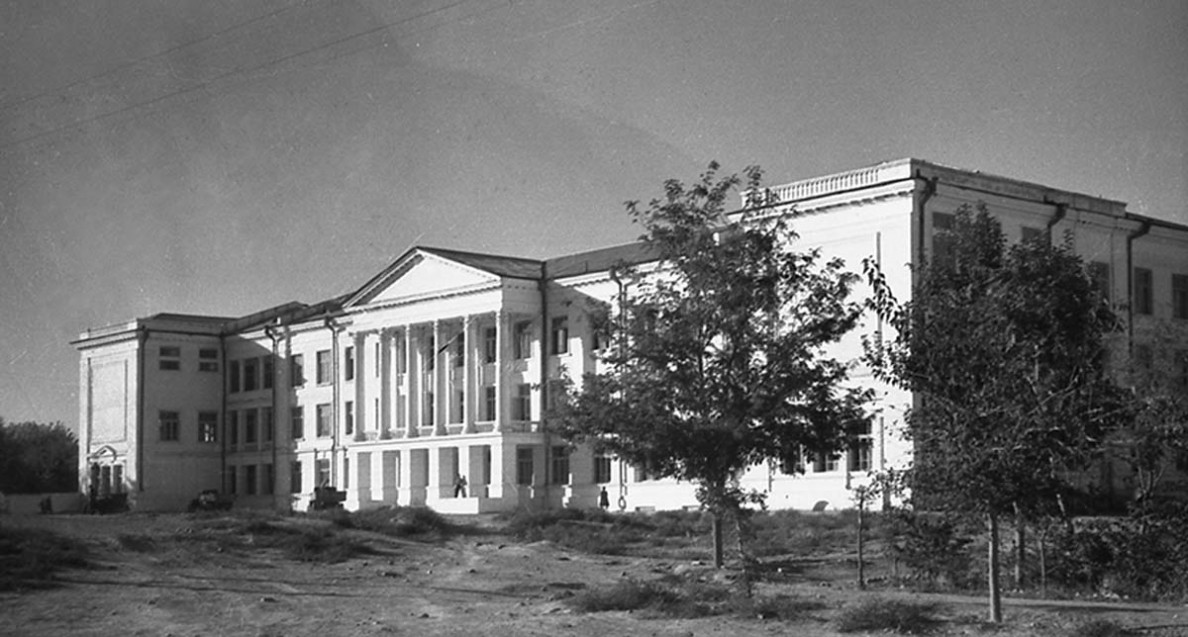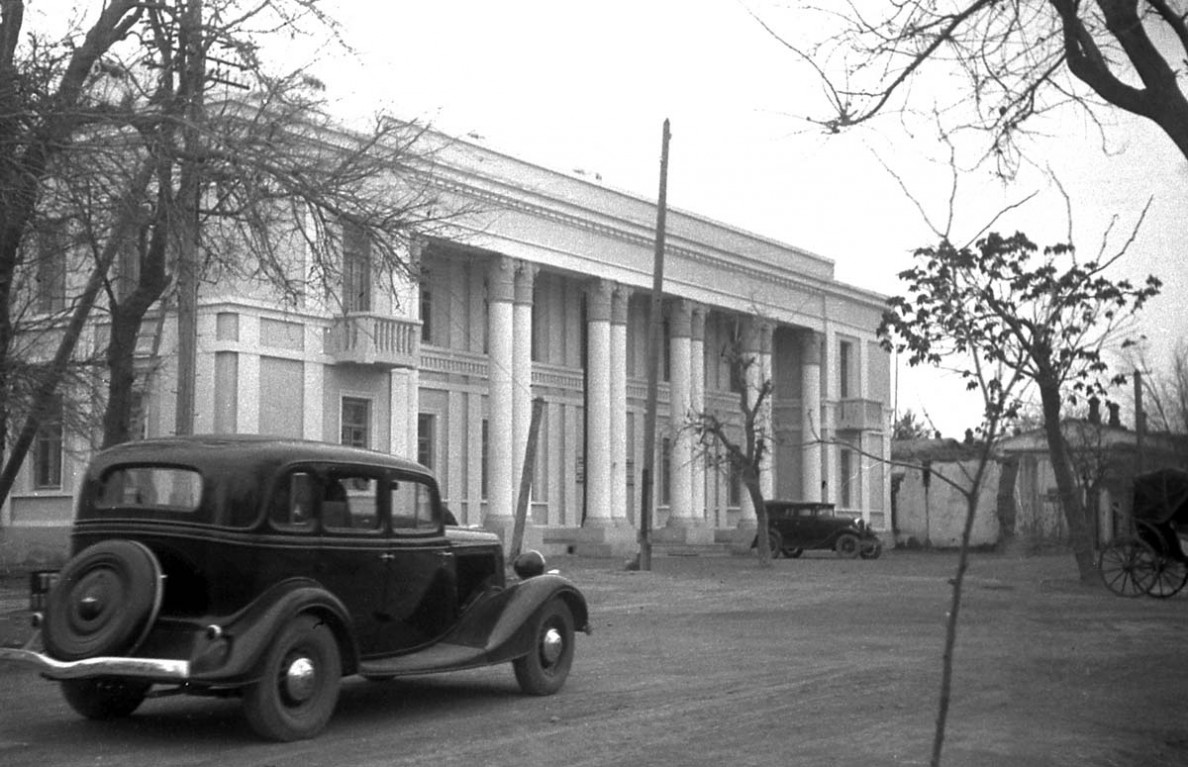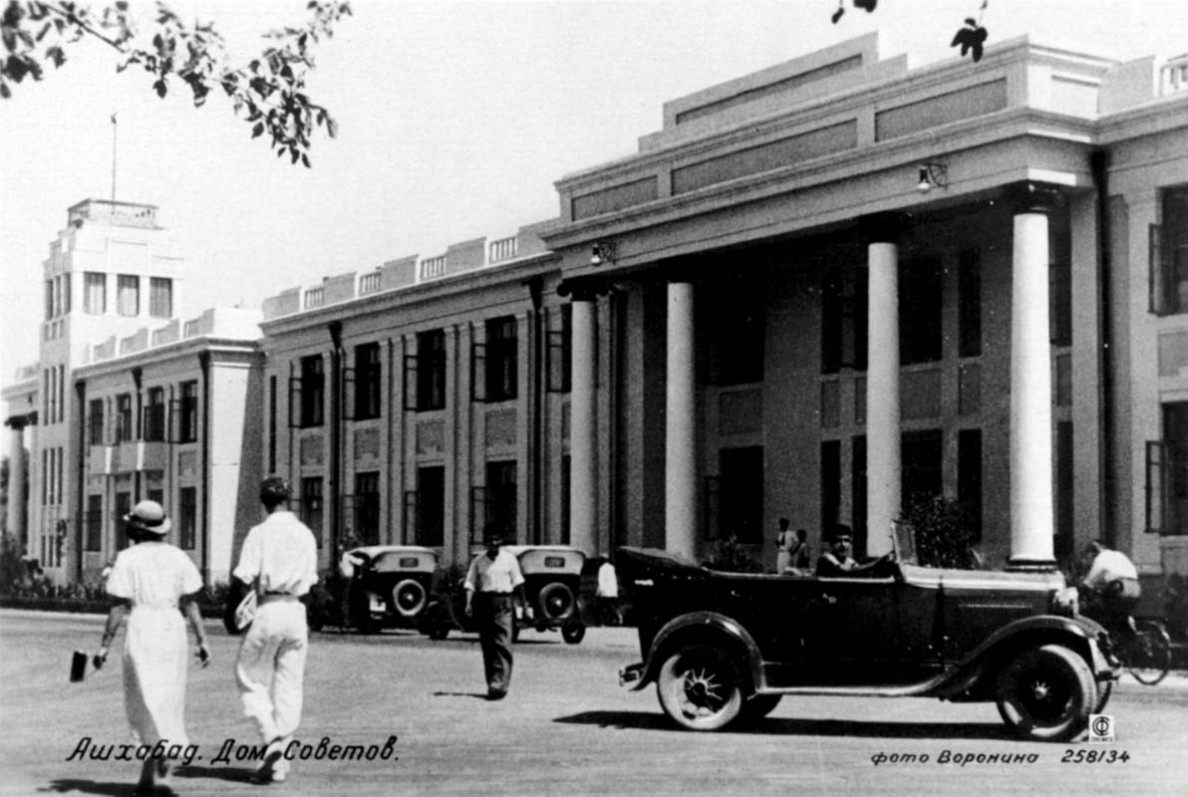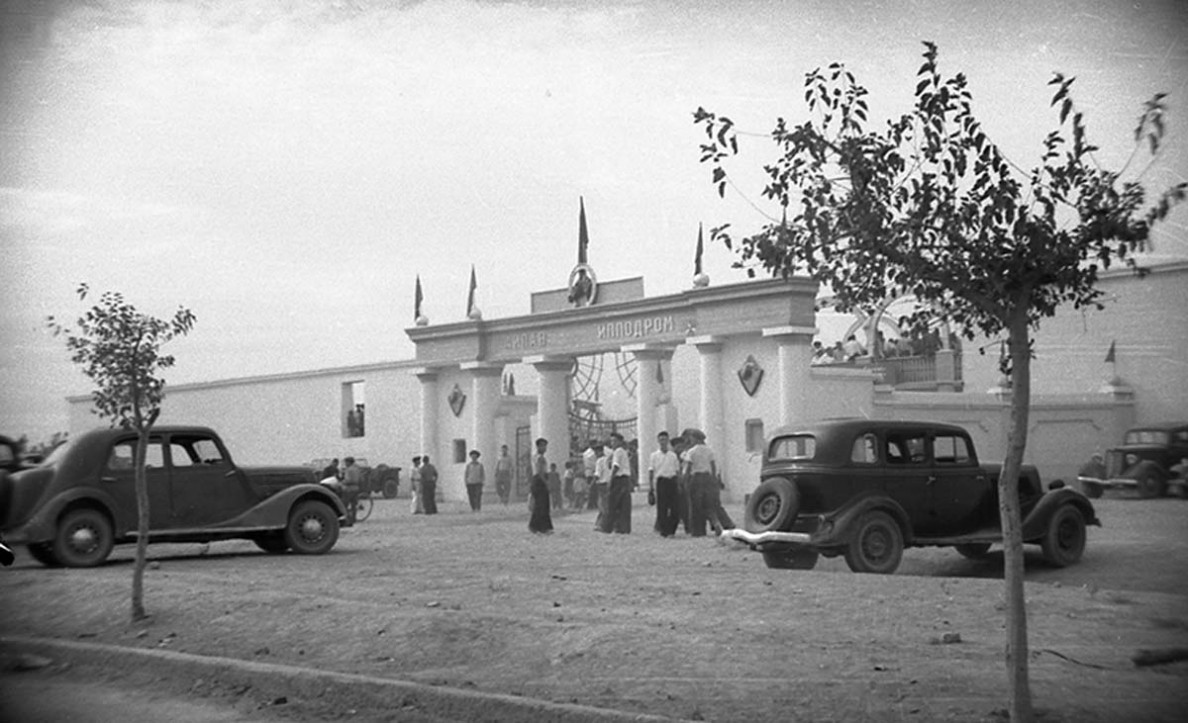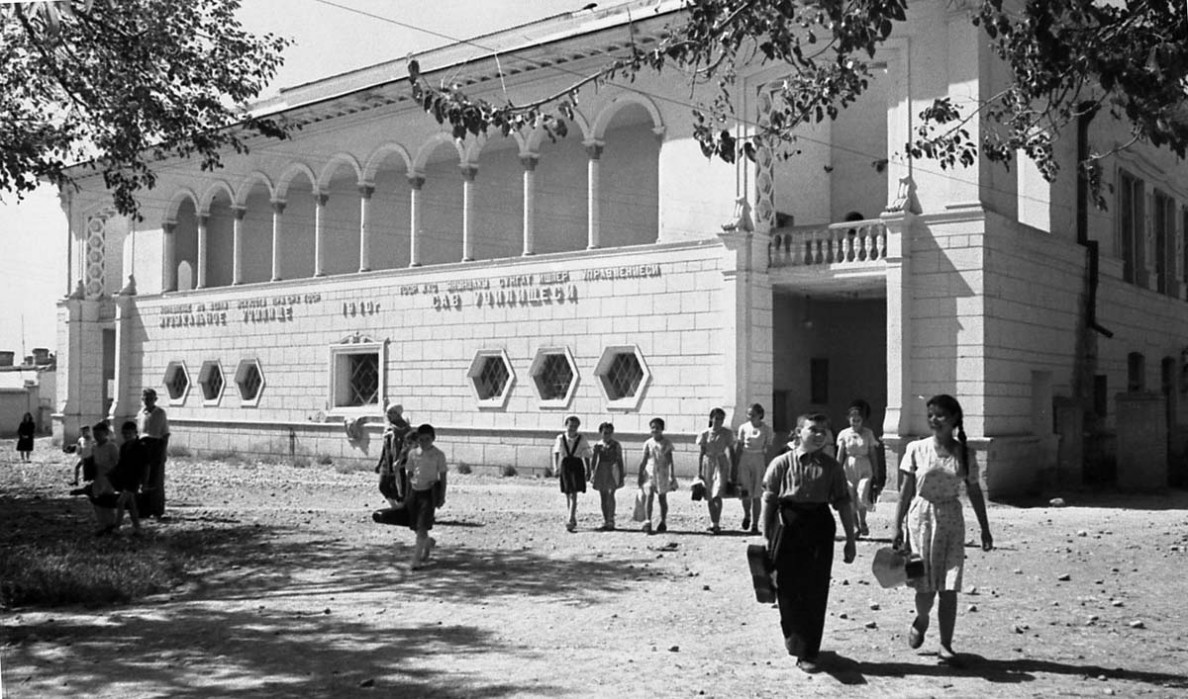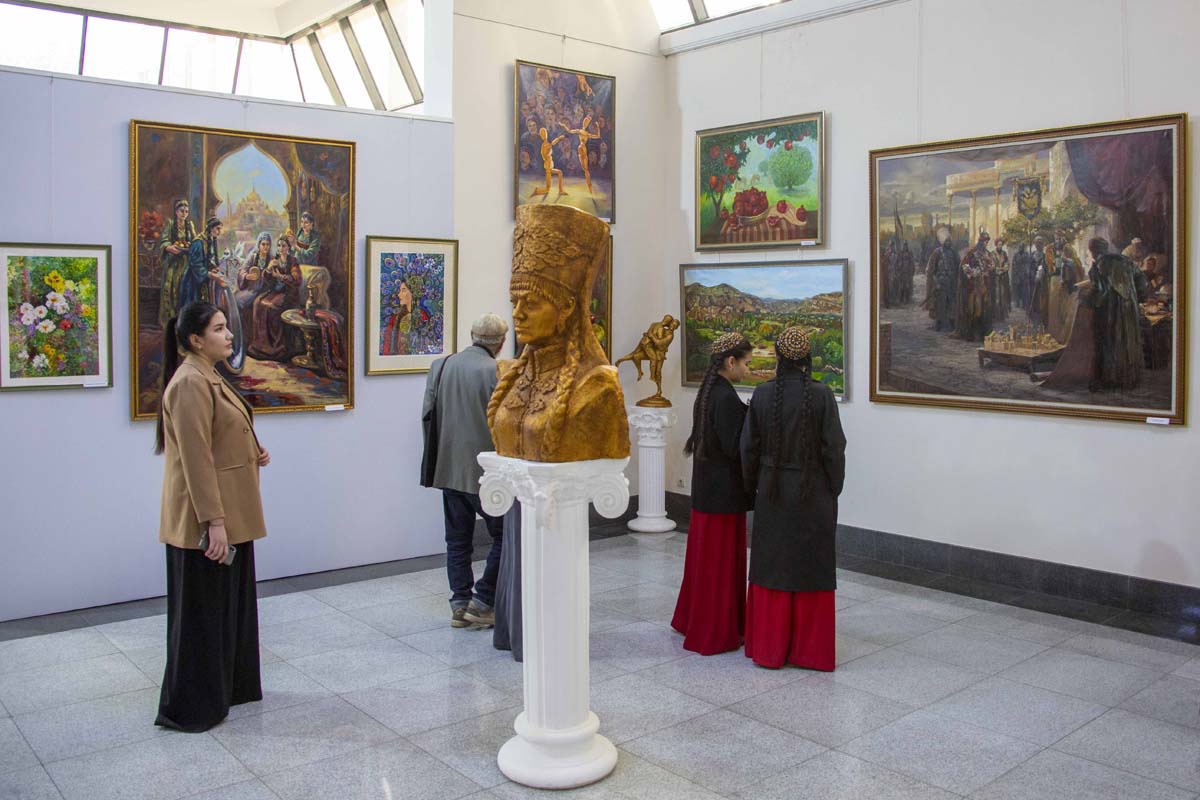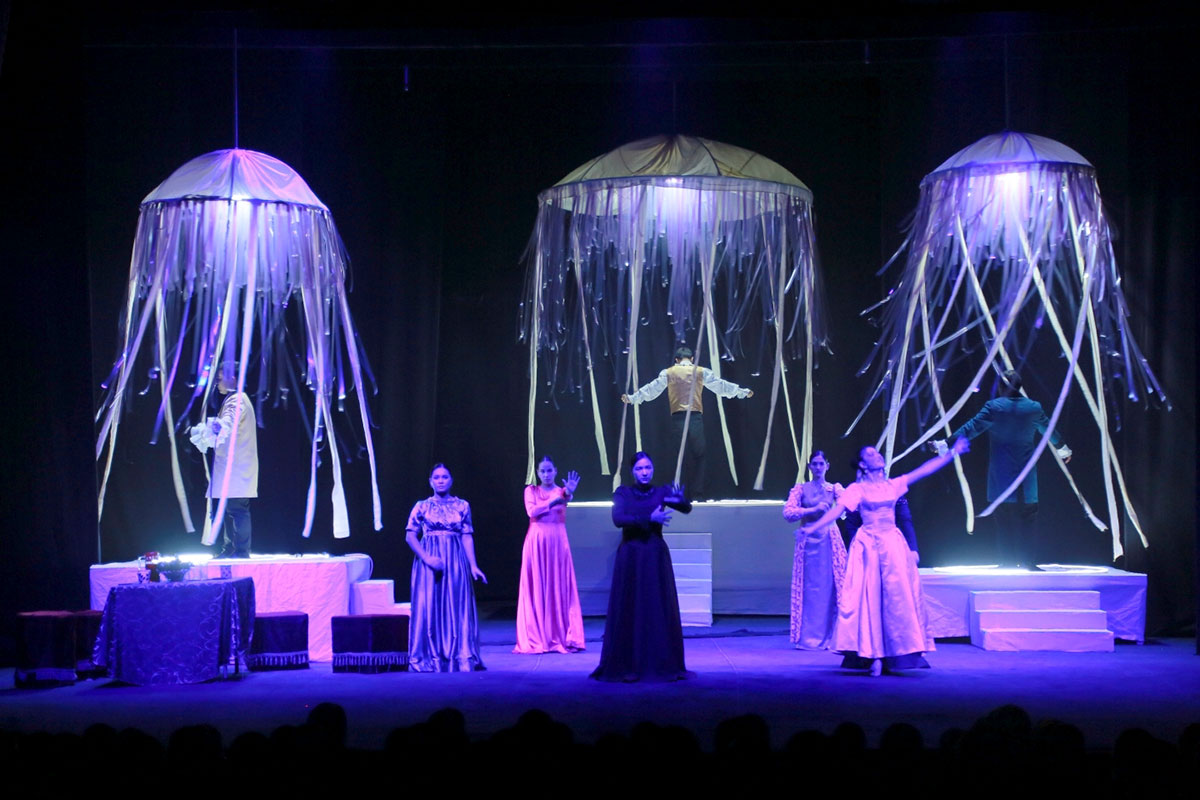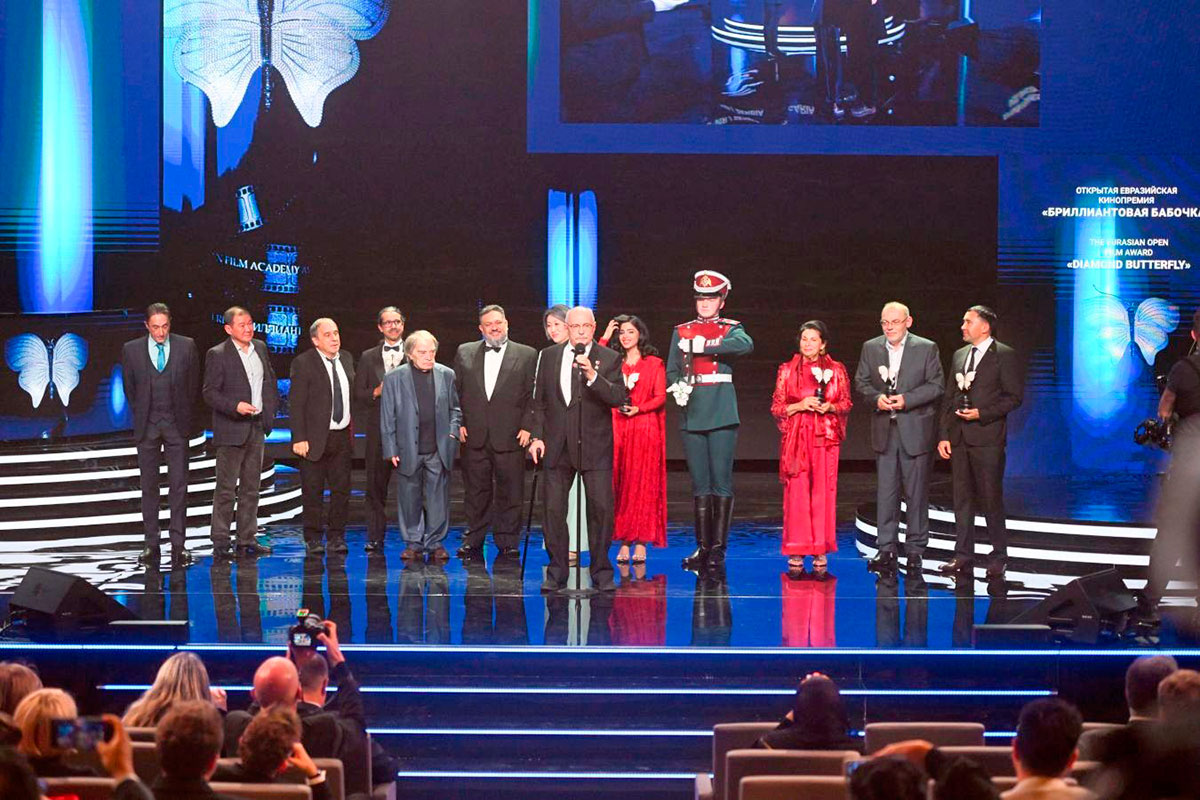On the threshold of the 140th anniversary of the capital of Turkmenistan, it is worth to look back and recollect from what Ashgabat began, what forestalled its appearance and what stages of history left traces in its current image. This city, which is loved by all generation of Ashgabat citizens, has its unique image these days as well being under dynamic development, it has the same uniqueness like it had in the past. The architectural historian Ruslan Muradov continue speaking about this. The first part of the story is under this link.
First and further, Civil War in Russia have paralyzed Ashgabat almost for ten years. Its population has been significantly reduced and the construction has not be carried out at all. Social and political turmoil in life of the city has started in 19117 after abolishment of the Russian Empire during February Revolution and collapse of all government institutes followed after the Revolution. Mass public disorders have started in the conditions of severe economic crisis and growing social tension. Revolutionary forces have been acting together with representatives of the Provisional Government of Alexander Kerensky, national movement of Turkmen people for their independence has started.
On November 22, 1917, small group of Bolsheviks has managed to take over the power in Ashgabat but their policy has caused the strike of Russian workers and Turkmens of Askhabad County, which started on June 17, 1918. Despite the attempts of the Bolsheviks to impose a military siege in the city, they were replaced after cruel street fights on the streets by the Provisional Government of the Caspian Region supported by Great Britain, which has already started the intervention on August. However, the success of the Red Army on the main fronts of the Civil War, which covered entire former empire, has made the British to withdraw their troops in April 1919 and the city, which was still held by the White Government, was surrendered without combat to advancing divisions of the Red Army.
New authorities have immediately renamed the city to Poltoratsky, in honor of one local Bolsheviks Pavel Poltoratsky, who was killed in summer of 1918 in Merv. Very soon, the name of the city was shorten to Poltoratsk. The city remained as administrative center of the Caspian Region, which renamed to Turkmen Region in 1921.
Isolated from the center of Russia under conditions of so-called military communism, Poltoratsk was in big demand of essential supplies. Foreign trades were broken, all attempts to restore the activity of local industrial facilities ended up only in construction of glass factory. The city has started to be restored from devastation only in 1922. The trade has been restoring slowly, cooperation has started to be developed. Central part of former Askhabad has lost its aristocratic luxury, facades of public buildings have been changed by red banners with various slogans and names of Soviet organizations.
New stage of development of city has started only after new Turkmen Republic, which has been founded in the result of disengagement of Central Asia, have been included to the Soviet Union and Pltoratsk have been announced its capital in 1925.
Having received new status, the city has started to come out of the freeze, which was caused by the consequences of recent war. All remained private facilities except living have been nationalized, their reconstruction has been started all around the city. The main buildings in the central part of the city have been occupied by the government and educational facilities. Churches and mosques have been closed and used for other needs. The industry has been restored, the population has started to come. The composition of the population was changing as former transit hub, through which active trade with Persia has been carried out, has turned into more closed socialistic city oriented to industrialization.
In 1927, it was decided to return old names of Poltoratsk and other settlements, which were renamed, “taking into consideration, - as relative Resolution said, - that renaming was not popular among local population and people continue calling the above-mentioned places by old names”. Thus, Ashgabat has received back its original name. By this time, it was already quite a developed city. In 1930, the streets have been paved with asphalt. Earlier, the buses have replaced horse-drawn transport. The trees have grown restoring and extending previous green pool. Water provision has been improved. For this purpose, water lines have been laid to the city from Bagir’s water sources and Gyami Qanat, Ashgabat Creek has be run through pipeline.
Industrial facilities, which determined economic profile of Ashgabat and its orientation to light, food, construction and metal-processing industry, have been opened during 1927 – 1937. Personal living construction was encouraged, in which result, the territory of the city has been increased almost two times for 10 years. Despite that Ashgabat has experienced strong earthquake in 1927, which did not caused victims and destructions of big number of buildings, the construction was carried out without taking into account seismic activity until 1934. However, even those measures, which were taken after approval of special project and construction standards, was not sufficient enough as it was found out later. On this background, the complex of textile factory, which was built in 1925 – 1929 under the leadership of outstanding Russian scientist in the sphere of civil engineering, Professor Vsevolod Keldysh, is worth to be highlighted. The method of calculation of super strong ferro concrete structures developed by him was applied in this project and successfully withstood serious ordeal – the earthquake in 1948.
In the 30s, the constructivism has been replaced with simplified classics. Nowadays, remarkable constructions of Ashgabat bear the whole number of symbols, which have to reflect the features of new life and relation with traditions in its image. The Lenin’s Monument (Author Alexander Karelin, 1924 – 1927), which was covered with polychrome majolica tiles, which imitate the patterns of Turkmen carpet, in the public garden on the place of former Gymnasium Square was one of the first and brightest facilities of this kind. Following ascetic buildings of new lifestyle and cultural palaces, more monumental and presentable administrative buildings, House of Councils Hotel, pedagogic institute, new railway stations, Music College have appeared. All-union contest for the best project of the State Theatre, which was announced in 1934, in which biggest Soviet architects of those times Academics Alexey Tschusev, Ivan Fomin, Vladimir Tschuko as well as their younger colleagues, was one of important events in architectural history of Ashgabat.
During the Great Patriotic War, Ashgabat was deep behind the enemy lines but thousands of city’s residents went to the front. Armory and food for support of the army during the Battle of Caucasus went by the railway through Turkmen capital from Siberia and Central Asia. In addition, number of facilities in Ashgabat has changed their profile to produce military supplies. In addition, number of facilities and institutions have been evacuated to the city from the war zone (in particular, Moscow State University, Kiev Film Studio), around 8,000 refugees have come to Ashgabat and have been accommodated in houses of Ashgabat’s residents.
There were many outstanding people who came to Ashgabat by fortune, who influenced cultural life of the city and played significant role in education of younger generation of national art and cultural personnel. Future academic and Nobel Peace Prize Laureate Andrey Sakharov has started his studies in thermonuclear physics in this place. Russian writer Yuri Olesha has been working efficiently with Ashgabat’s Pushkin Theatre, Ukrainian movie director Mark Donskoy has produced his famous movie “Raduga” (Rainbow), which was awarded with Oskar Award by American Movie Academy in nomination of the Best Foreign Movie of the Year. Academic, neurosurgeon and Sanskrit scholar Boris Smirnov, who stayed to live in Ashgabat, has been translating philosophic texts of ancient Indian epic of Mahabharata to Russian language. This is only the most famous names.
The raise of construction activity has been observed in Ashgabat, which looked ather prosperous comparing with the cities destroyed by the war in European part of the country, in the first years after the war. Construction of new industrial buildings, education facilities, hospitals and other socially oriented objects was planned. Government living construction was expanding. However, sudden natural disaster has interrupted this work causing irreversible damage to the city.




